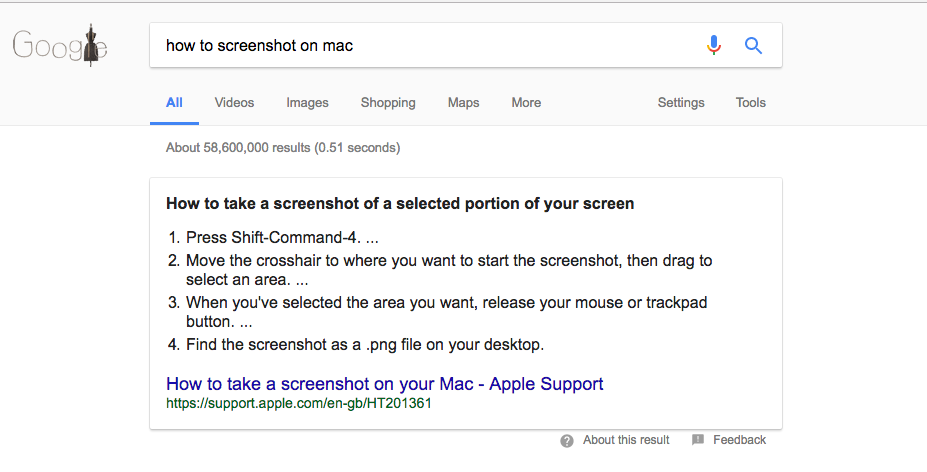Digital in 2017
Getting your site to show in a Google search - and ultimately, having people click through - is the ultimate goal of SEO.
Traditionally, good SEO (search engine optimisation) was all to do with ranking: choosing specific keywords for Google’s algorithms to pick up on, and use to rank your site in terms of how well it matches a search for those words. As a result of that, digital industry experts have long been too caught-up in the pursuit of ranking.
But things are changing.
A well-known fact is that Google's algorithms are continuously optimised to set the latest trends in digital marketing. Today SEO is no longer based around keywords, but around writing great content instead.
In 2017 digital news sources advise marketers and businesses to structure their online presence with usefulness in mind, as opposed to being obsessed with ranking. This means well-structured content, that is actually helpful and informative for readers - this is what Google wants to provide its users with.
Useful, informative content is bound to draw in more readers, who will actually share your content and bring in even more traffic.
Sounds logical, doesn’t it?
But what about click through rates (CTRs)? Where your site ranks in a search has traditionally been important to CTR - after all, studies have shown that the top three results are most favoured. And, of course, search results ranking and CTRs have always been and will be related.
Google’s Featured Snippet Box
Today, however, it doesn’t really matter where you rank. What you need to do is research your keywords thoroughly, utilise them wisely for SEO, and structure your content with your audience in mind. Think about usefulness, language, tone of voice and close relevance. When you have all this in place, your site will feature on page 1 of all search engine results pages (SERPs) for your keywords.
Why should that be?
As you may have noticed, top search results are now rarely organic listings. These are increasingly paid-for ads and/or Google Featured Snippets (a.k.a Google's answer boxes).
Google's Featured Snippet is a text box, appearing above result #1. It draws a piece of content from one of the pages ranking on Page 1 of a search. It picks the most relevant content - usually directly answering a question-based search, but not limited to that. The box also features the link of the page where it’s taken the content from.
You might worry that seeing a snippet of your page reduces the chances of click-throughs to your page. However, Google Snippet Boxes do not compromise CTRs, even though a user might find the information searched for instantly within those very boxes. In fact, they dramatically increase CTRs for the results on page 1 of a Google search. Studies show that the #1 result, listed right under the snippet box enjoys increased CTR by well over 100 %. So even though users might get what they're looking for from the snippet box, they would still click through to learn more. This is particularly the case for high traffic keywords.

So how do you get in the box?
By getting the 2017 essentials of good content, mentioned above.
HubSpot has identified that what really matters for Google’s Featured Snippet box the most is keyword semantic relevance, clear page structure and quality content.
It really is just as simple as that: regardless of your website’s backlinks and various authority signals. Your site might even be relatively new and unknown and still rank above more established websites. And it doesn’t matter where exactly you rank on page 1 of a search - Google’s snippet might pick you even if you’re #5.
Google is becoming increasingly smart in finding and featuring useful content. It will always identify the most relevant piece of information a user is looking for and present it in the most focused manner. Even if that means that the engine pulls out only step #8 of a comprehensive 24-step-by-step guide you might feature on your page, to present as a snippet - or even just the subheadings of that same guide.
So what can we take from this? Page structure and wording are of paramount importance to your content – make sure you run a comprehensive audit of your keywords. After all, Google needs to read and understand everything featured on your website.
Want to know more about optimising your site for Google? Get in touch and we'd be happy to talk it through with you.
